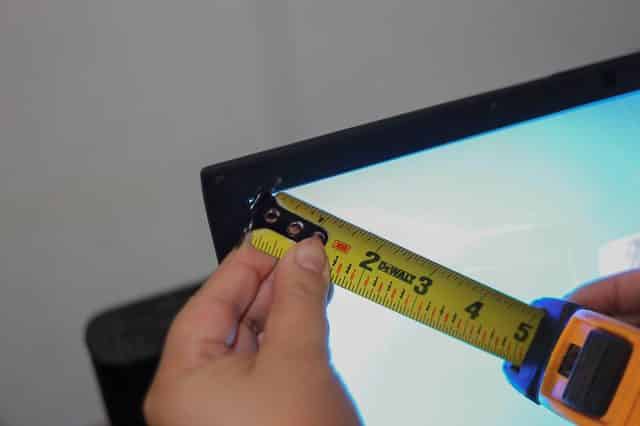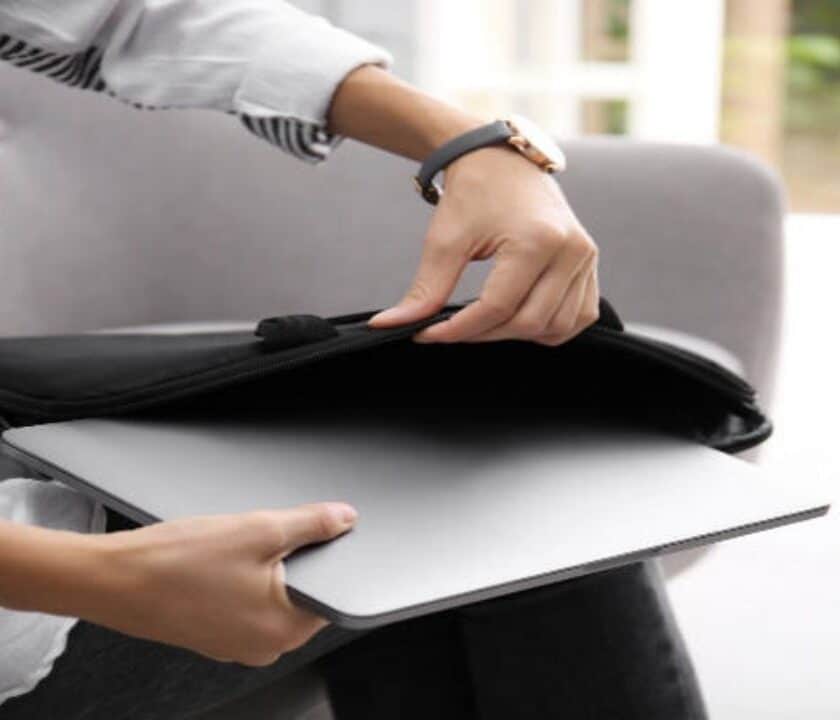Have you ever wondered how are laptop screens measured? Screen resolution seems simple enough to understand. If you see that your screen has a 1920×1080 display. It’s easy to tell that your screen is 1080 pixels wide and 1920 pixels tall. However, there’s more to the picture than meets the eye regarding high-resolution displays.
Before buying a laptop, it’s essential to ensure that the screen will be the right size and display quality for your needs. A laptop screen can be measured in two ways; size or resolution. We can help you figure out the exact size of your screen, so you can get precisely what you need from your laptop.
Whether you’re shopping for laptops or already have one. We’ll help you determine the proper size of your screen. So, you don’t end up with anything smaller than you wanted. In this article, we’ll discuss deeply the measurement of a laptop screen to help you make an informed purchase decision.
Steps to Measure Laptop Screen Size

Purchase a standard tape to measure
Using tape, it’s easy to determine your screen size. You first must pull out your tape measure and ensure it’s at least five feet long. Then, take one end of it and hold it against a flat wall near your computer desk or table where you usually use your laptop.
Measure from that wall across to the edge of your screen while holding down any keys on either side. For example, if you press on shift while measuring, release that key before getting an accurate measurement. If no flat surface is available, measure from the floor to the screen instead.
Determine your laptop screen starting point
Laptop screen size is measured diagonally from one corner to another. It will help determine your starting point when picking out a laptop. You may want to go with a 13-inch laptop if you have smaller hands. If you’re looking for something more portable, you might wish for an 11-inch model. You can also consider the computer’s weight and what features it has before making a decision.
Make a note of your measurement
We measure our laptop’s screen size using height, width, and diagonal metrics. The height and width of a laptop display are pretty self-explanatory; its lengthwise or horizontal measurement. However, the diagonal size isn’t as intuitive to grasp because it doesn’t include any information about How are laptop screens measured.
Converting centimeters to inches
There’s no universal system for measuring laptop screens, but it’s easy to find your laptop’s exact size using a ruler. The first step is to convert centimeters into inches. To do that, divide centimeters by 2.54. Take that number and add 29 to get your laptop screen size in inches.
Diagonal length and width are the two most common size measures in laptop display measurements. The diagonal measure also known as screen size, determines how wide your screen is as compared to its height. If you know how many inches it is across and down, you can divide one number by another to get your diagonal measurement in inches.
Frequently Asked Questions
What are the typical laptop sizes?
Laptop screen sizes are usually classified by the diagonal size of the laptop’s display. 13-inch and 15-inch laptops are the most common sizes today, though that hasn’t always been the case. For example, there was a time when 8- to 10-inch displays were more common.
Laptops with more prominent displays have always existed, though they haven’t caught on like 13- and 15-inch models have. If you’re looking for your next laptop, it’s probably worth sticking with one of these two sizes.
Most laptops are categorized as either 13-inch or 15-inch. It can easily get mixed up about how their displays are measured. Screen sizes (in inches) are based on the width and height measurements taken from edge to edge of the screen without any physical border or overlap present.
How are Laptop Displays Measured?
High-resolution displays typically have a higher pixel density than standard displays; that is, more pixels per inch. However, it’s essential to know whether you’re looking at pixels or dots.
For example, a 1,920×1,080-pixel display (16:9 aspect ratio) has roughly 2 million pixels spread across its 15.6 inches, which translates to an average pixel density of 110 pixels per inch (PPI).
How do you determine your laptop’s screen size without measuring it?
Laptop screen sizes come in many shapes and sizes, but manufacturers list their screen measurements in diagonal inches. For example, a 15-inch laptop will have a 15-inch display. However, it’s not that simple. This measurement is only based on the width of your screen’s border.
What’s more, the height of your screen is also essential and isn’t typically given in manufacturers’ specs. Your screen will have a shorter size than its width because it has to accommodate a keyboard and touchpad when open. As such, you can calculate how tall your screen is by dividing the size by the number of pixels.
Conclusion
If you’re looking to buy a laptop, it’s essential to know How are Laptop Screens Measured? so you can make an informed purchase. Most laptops have screens around 17 inches wide by 9 inches deep. It is a good size for most people.
However, if you have a large wrist or trouble using your standard keyboard and mouse, you may want to consider a larger laptop with a 17+-inch screen. For example, one model I found had an 18.5-inch screen that was half again wider than the average 17-inch laptop.
You will only be using your laptop in smaller rooms (like at home) unless you are sure. It’s probably worth getting the bigger laptop for the extra ergonomic space.
To measure your laptop’s screen, you’ll also need a ruler. Place your computer on a flat surface with its front side facing up and its lid closed.

